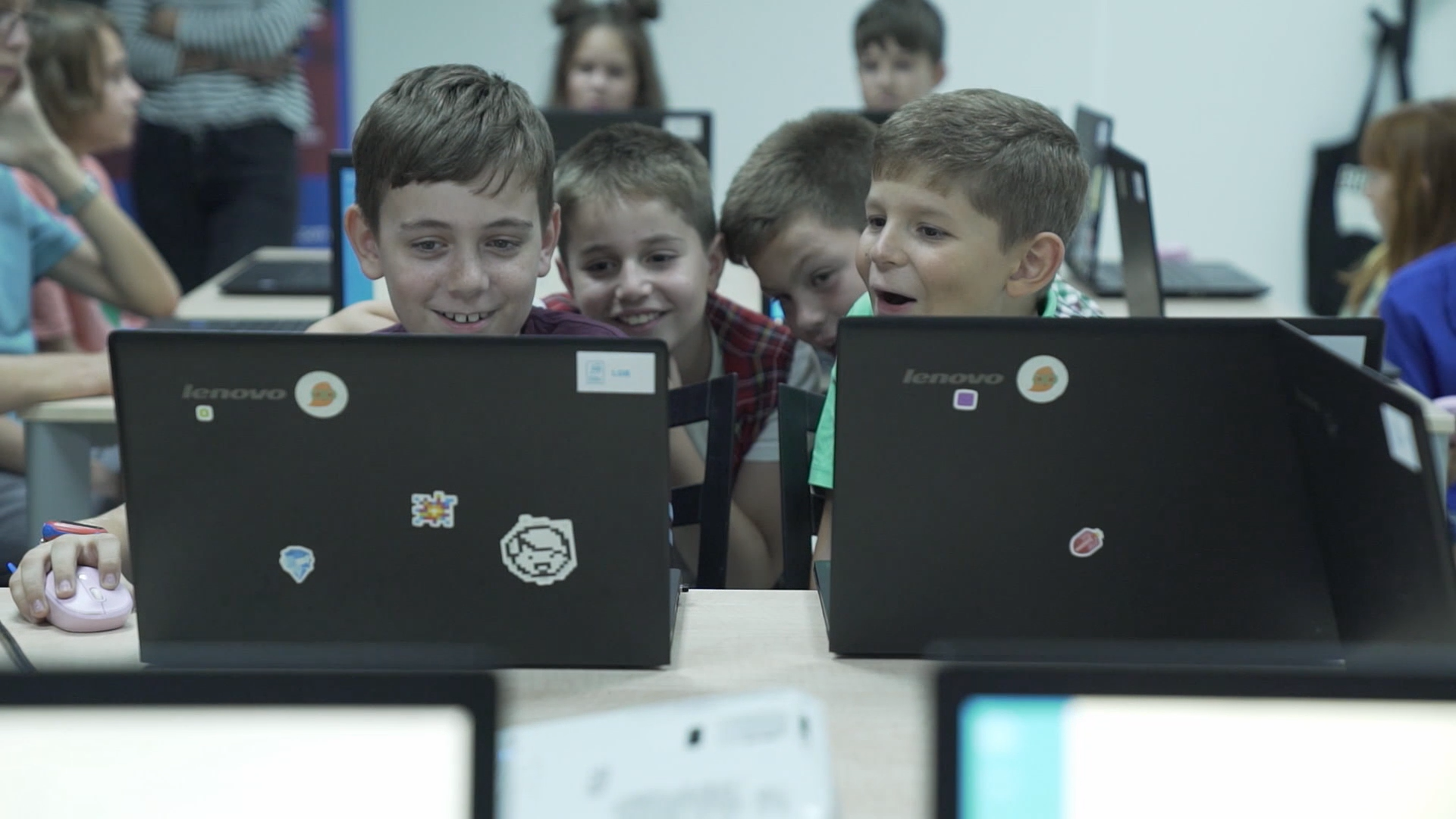Last summer, more than 50,000 union workers in Las Vegas casinos threatened to strike. Last fall, hotel employees at Marriott International voted to strike at dozens of U.S. locations. The same issue was at the heart of both disputes: The workers were afraid of being displaced by automation.
As artificial intelligence, machine learning, and other technologies enable more machines to do what humans do, such events may be harbingers of what’s to come. According to the World Economic Forum’s Future of Jobs Report 2018, half of all companies surveyed expect automation to reduce their full-time workforce by 2022, based on current job profiles. The other side of the coin, however, is a net gain of about 60 million jobs based on new job descriptions needed for a more automated workplace.
But to reap those new jobs will require training. And, the report suggests that retraining will be key to avoiding talent shortages, mass unemployment, and inequality: “It is critical that businesses take an active role in supporting their existing workforces through reskilling and upskilling, that individuals take a proactive approach to their own lifelong learning and that governments create an enabling environment, rapidly and creatively, to assist in these efforts,” says the WEF.
The U.S. government has so far been MIA. The U.S. Department of Labor’s strategic four-year plan, issued last year, didn’t even mention artificial intelligence, says Michael Lotito, co-chair of the Workplace Policy Institute at the employment law firm Littler Mendelson P.C. “The words didn’t even appear in the document,” he said. “We’re totally unprepared.” This realization led Lotito to co-found the Emma Coalition, a partnership of businesses, organized labor, non-profit and academic groups to prepare the workforce for what it terms “technology-induced displacement of employees.”
A small number of automation companies, however, are stepping forward to address the problem, helping their customers use the technology both to improve productivity and create new opportunities for their employees. It’s good for their customers, good for employees, and good for the vendors, who pave the road for increased adoption of their tools.
Software Robots
Although people tend to picture automation as a hardware robot in a factory, much of automation occurs through software. In fact, one of the fastest growing sectors of the AI market is robotic process automation (RPA). RPA is software that uses AI to work with other software programs and handle rote tasks like invoicing and customer service support.
A typical RPA application is invoice processing. The software can open mail, download PDFs, copy vendor and cost information, open an accounting system and create payments from that data, freeing accountants from those rote tasks.
Forrester Research recently revised its growth forecast for the RPA market upward, predicting it will reach $3.3 billion by 2021. Among the fastest growing RPA vendors is UiPath, founded in 2015 by two Romanian entrepreneurs. The company’s customer base shot up in 2017 from less than 100 to more than 1800 companies, which increased its annual recurring revenue by eight times, according to the company. It is Romania’s first unicorn. After three rounds of funding totaling more than $400 million, the company says it has a $3 billion valuation.
Analysts think RPA is the tip of the spear of AI technology that could quickly remake the workforce. For its part, UiPath is pioneering an approach to help smooth out what could be a rocky transition. It says it wants to democratize RPA by making its software available for free, providing free online training through the UiPath Academy it started last year, and by teaming up with schools, governments, and nonprofits to educate the workforce and prepare it for the transition.
“We are enabling a future where employees at every organization are empowered to automate tedious and time-consuming work, enabling them to focus on creative, challenging problems,” said Daniel Dines, co-founder and CEO of UiPath. “UiPath is driven by the incredible potential for our platform to be the gateway to transform our customers’ digital business operations with machine learning and AI.”
DIY Training
Ana Cinca was one of the company’s first employees and now serves as vice president of enabling technologies. UiPath’s philosophy is very much based on the experience of young techies in Romania. The founders — indeed most Romanian software developers — did not learn to code by going to school. “They learned to code from the internet,” she said. “They appreciate the fact that there is so much information that’s free, open-sourced, high quality information.”
They wanted to provide RPA education in the same vein, which led the company to create the academy and the training partnerships. It helps that the millennial generation prefers unstructured independent learning, like that offered through massive open online courses (MOOCs). “We thought education should be free, meaningful, and open to all those who are curious,” Cinca said.
While automation will displace some workers, UiPath and other automation vendors like to stress that it will also enable workers to forgo boring tasks and do more interesting, creative and high-value work. What’s more, automation will create entirely new types of jobs. Thirty-eight percent of the companies expected to extend their workforce to new productivity-enhancing roles, and more than 25 percent expected automation to create new roles within their companies, according to the WEF report.
Automation Everywhere
Today’s tight labor market may actually be an ideal environment for companies to roll out automation. The trucking industry, for instance, is experiencing a serious shortage of drivers. The American Trucking Association estimates a shortage of more than 50,000 drivers today and predicts that will reach 150,000 by 2026.
“In many respects, autonomous trucking represents a canary-in-the-coal-mine for jobs in other industries, posing a good opportunity for business leaders, technology strategists and public policy proponents to assess how to successfully manage the transition,” says a Cognizant report, “No Hands: The Autonomous Future of Trucking.” A company called Peloton, for example, uses automation technology to enable truckers to “platoon,” essentially travel one truck after another, synced through technology, to save fuel and increase safety.
Today, human drivers are still doing the driving. Eventually, however, long-haul truckers could be displaced as trucking becomes totally autonomous. Yet, those truckers might take on more short-haul work, because autonomous vehicles aren’t good at navigating cities. Meanwhile, there will be new and different jobs.
“Shippers must find new ways to protect unmanned cargo from theft, for example, and trucks will still need to refuel on trips across the country,” says the Cognizant report. “Without drivers present, support workers in the field become paramount to ensure the vehicle remains in working order with maintenance checkups. Changing tires on the road is another routine task that drivers do but is impossible for autonomous trucks. All of these job tasks present opportunities for innovation within the industry and job roles to help maintain the truck fleet of the future.”
In industries like healthcare, automation may free professionals from drudgery that earlier automation imposed on them. Paperwork remains one of the top burnout factors for doctors and nurses, says Robert H. Brown, associate vice president of Cognizant’s Center for the Future of Work. Electronic medical records have not eased the burden.
“They’ve just swapped tablet computers for paper, but the work is still exactly the same,” he says. “They have to be entering information into the tablet while visiting with the patient.”
A Silicon Valley startup called Augmedix is addressing that problem through automation. It uses Google Glass and augmented reality to give physicians a hands-free way of pulling up patient data and recording medical notes, using natural language processing, so the healthcare professional can focus exclusively on the person.
The key to winning workers over, says Brown, is change management, the kind that shows that automation is creating a better future. If you can do that, “you can take the biggest skeptics and turn them into the biggest advocates for the technology.”
And that future will not be just a new job. “It’s not necessarily going to be training for [a particular] job because the jobs are going to continuously change,” says Lotito. “In the industrial revolution, we taught someone how to be a tool and die maker and that worked well for 30 years” until tool and die work was automated, he says. “With AI, you can’t do that because the job will continually change.”
UiPath is facing the fears of displacement directly. “We admit that this will impact the way they work,” says Cinca, “but we also show them how it can open up new horizons.”
Companies Aim to Ease Workers into Automation
Workplace automation is poised to virtually eliminate rote office work. Our partner, UIPath, is among a small number of companies helping their customers use the technology both to improve productivity and create new opportunities for their employees. It’s good for their customers, good for employees, and good for them as it paves the road for increased adoption of their tools.

UiPaths Youth in Automation program is helping train future generations to work with software robots. (Photo courtesy of UIPath)UiPaths Youth in Automation program. (Photo courtesy of UIPath)










